After all grapes are picked, the greenhouse's vents were opened, so the chill coming in stimulates leaf drop and the plants go into dormancy.
In December, it was time for pruning, and we got some training.
Our vines are grown with the "cordon rod and spurs" systems, which means that plants are planted 1-1.2 m apart, and trained as a cordon (only one main stem) tied to a frame; a fixed number of spurs (aligned with the wires) produce laterals that are then trained and tended meticolously to produce one, perfect-looking grape per branch.
 |
| Pruned cordon |
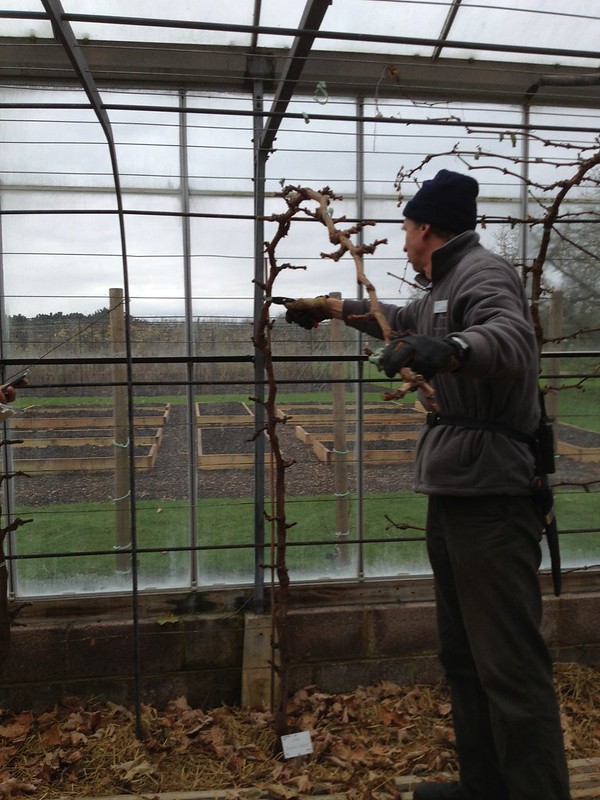 |
| Cordon getting untied |
After that, the vines are untied from the frame, because buds break more evenly in the spring if they are not. Untying is also useful because winter is the time for bark scraping.
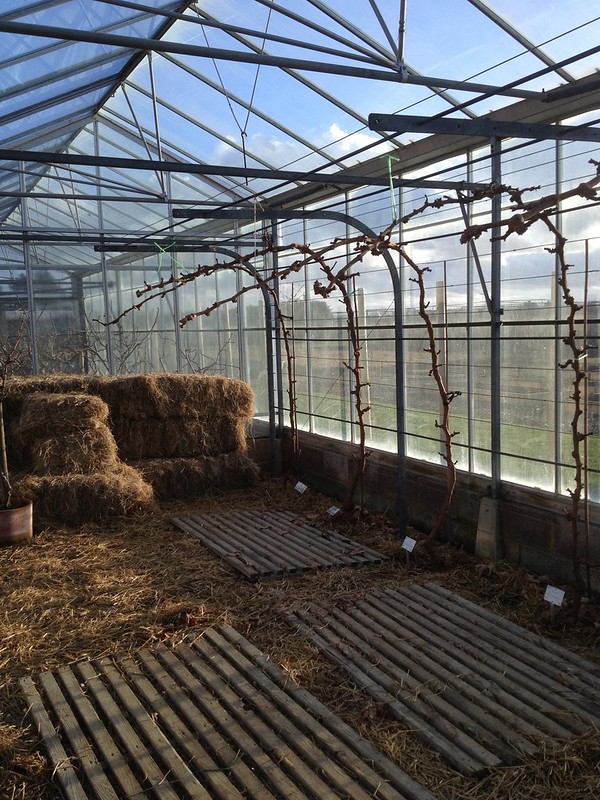 |
| A rather serene image of the vines in January |
Bark scraping, or peeling of the bark, is something I spent a couple of rainy days in January and February doing, as it is the perfect task to keep one busy in such weather conditions! With the help of a (preferably not too sharp) knife, one peels the flaky bark of the vine off (it mostly comes away in long strips), so that pests cannot take residence that easily, and any that have are exposed and can be sprayed with a soap-based winter wash. Over the winter, the straw that is covering the soil, with a layer of compost, is also scraped away, removing some of the patogens it might host.
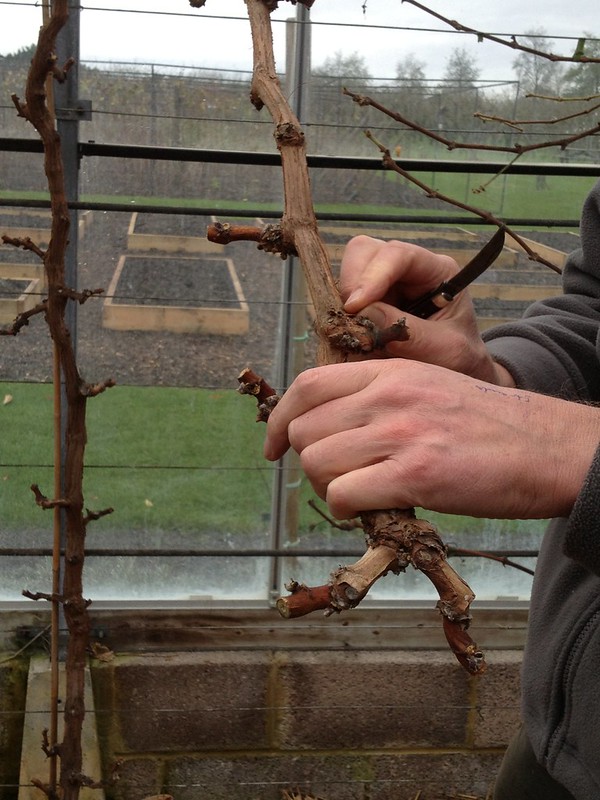 |
| Demonstration of bark scraping |
The job is quite delicate, and time consuming as you have to remove only the bark, one strip at a time, never exposing the green phloem layer. Around the spurs, then, it gets even more delicate, as you have to make sure you don't accidentally knock the embryonic buds that are waiting to grow under the bark (in the pictures below, they are the apparently dried, fluffy, white tips sticking out)
.
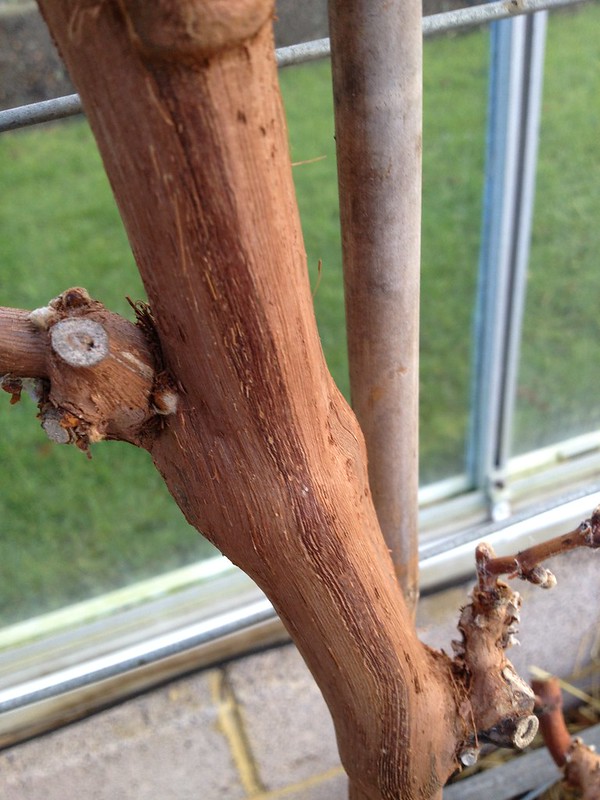 | 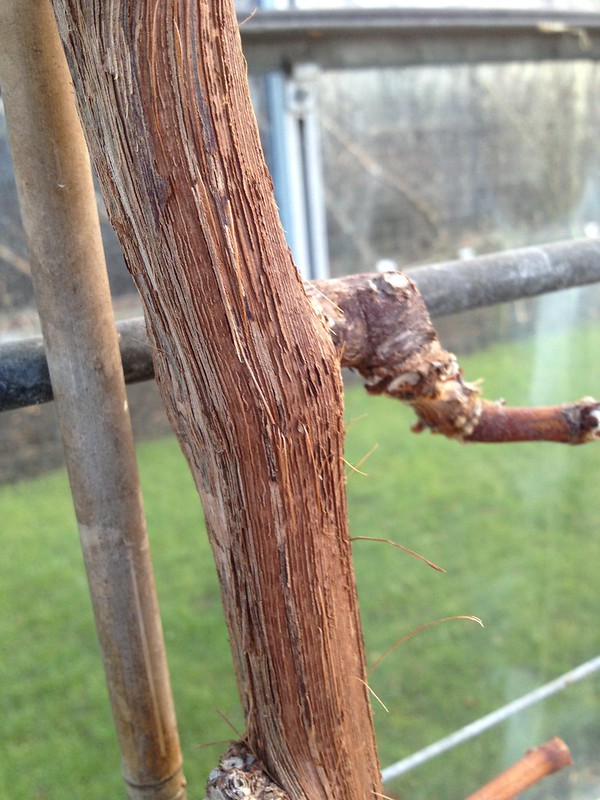 |
| Main stem: before... | ... and after scraping |
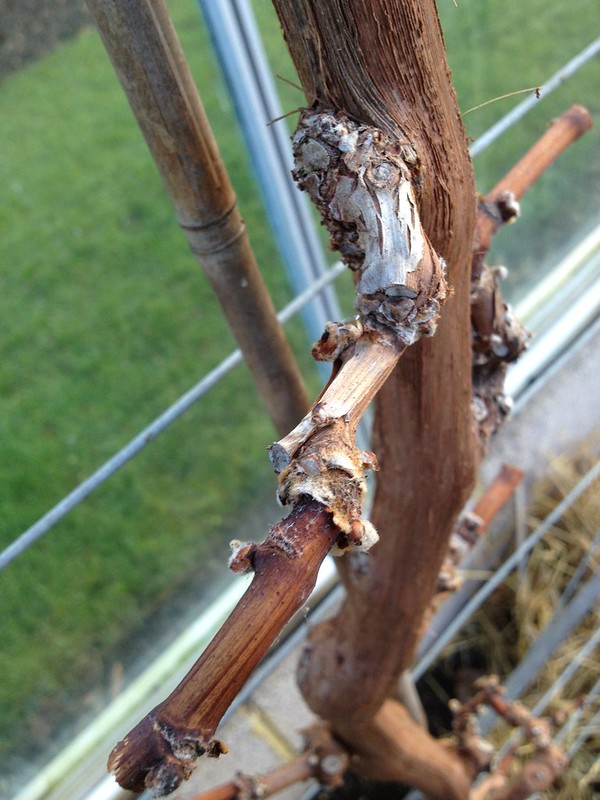 |
 |
| Spur: before... | ... and after scraping (note the bud initials) |
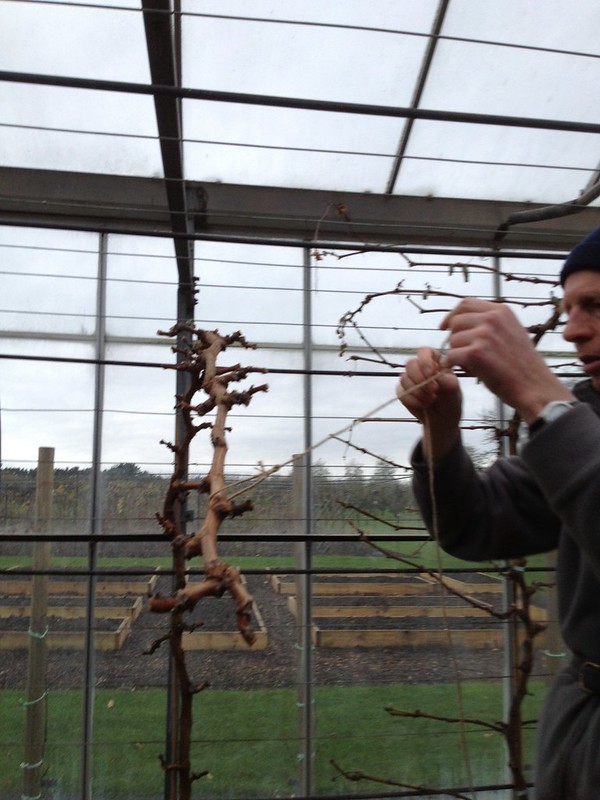 |
| Tying of the rod demostration |
Because some of the cordons are rather heavy, and in any case to take the weight off and avoiding swinging and snapping, the rods are then tied loosely.
When they start to break bud, the rods are then tied close to the frame once again, and the new shoots are trained along the wires, which takes me neatly to the job I've been doing today: training of the new shoots.
Read on...
No comments:
Post a Comment